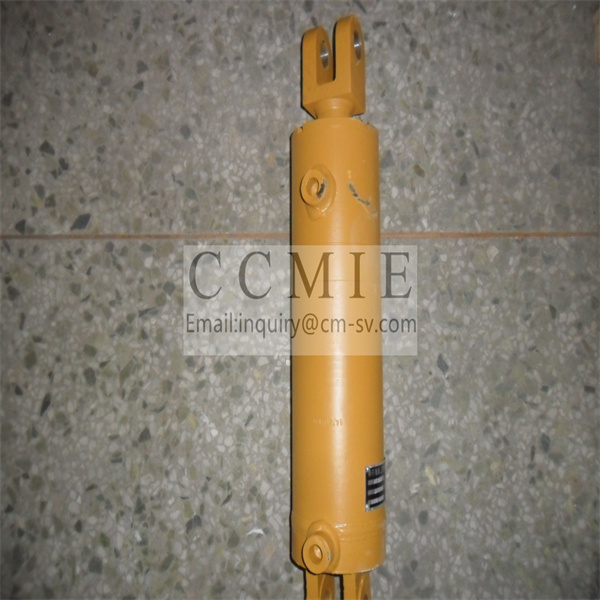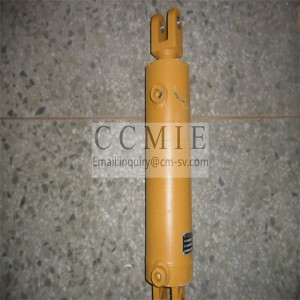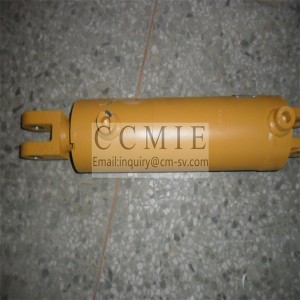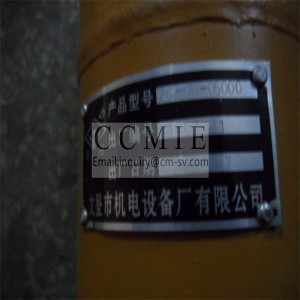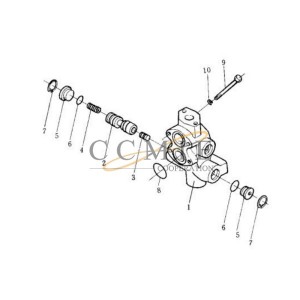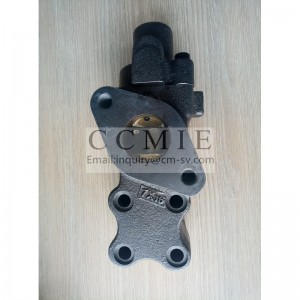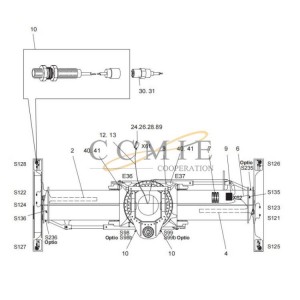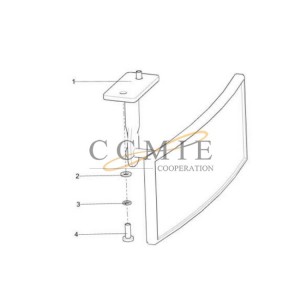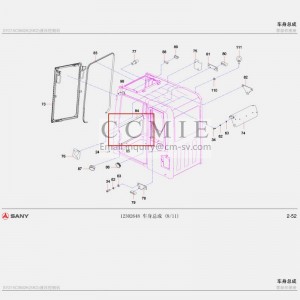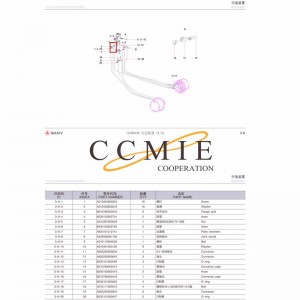Road roller cylinder XCMG road roller spare parts
Cylinder
Because there are many kinds of spare parts, we can’t display them all on the website. Please feel free to contact us for specific ones
Advantage
1. We supply both original and aftermarket products for you
2. From the manufacturer to the customer directly, saving your cost
3. Stable stock for normal parts
4. In Time Delivery Time, with competitive shipping cost
5. Professional and on time after service
Packing
Carton Boxes, or according to clients’ request.
description
The hydraulic cylinder can be divided into piston cylinder\plunger cylinder and swing cylinder from the structure.
Cylinders can be divided into piston cylinders\film cylinders\retractable cylinders from the structure.
The working principle of the hydraulic cylinder is: when it comes to its working principle, I will first talk about its five most basic components, 1-cylinder and cylinder head 2-piston and piston rod 3-seal device 4-buffer device 5-exhaust Device
The work of each type of cylinder is almost the same. I will take a manual jack to illustrate its work. The jack is actually the simplest cylinder. The hydraulic oil is made by manual booster (hydraulic manual pump). After a single valve enters the cylinder, the hydraulic oil that enters the cylinder can no longer be reversed because of the single valve, forcing the cylinder rod upward, and then the work continues to make the hydraulic oil continue to enter the hydraulic cylinder, so it continues to rise, and it will drop. At that time, open the hydraulic valve to return the hydraulic oil to the tank. This is the simplest job, and the others are improved on this basis.
A hydraulic cylinder is an executive element that converts hydraulic energy into mechanical energy in a hydraulic system. The faults can be basically summarized as the malfunction of the hydraulic cylinder, the inability to push the load, and the sliding or crawling of the piston. It is not uncommon for the equipment to stop due to the failure of the hydraulic cylinder. Therefore, attention should be paid to the failure diagnosis and use and maintenance of the hydraulic cylinder.
1. Fault diagnosis and treatment
1. Malfunction or malfunction
The reasons and treatment methods are as follows:
(1) The valve core is stuck or the valve hole is blocked. When the flow valve or directional valve spool is stuck or the valve hole is blocked, the hydraulic cylinder is prone to malfunction or malfunction. At this time, check the contamination of the oil; check whether dirt or colloidal deposits are stuck in the valve core or block the valve hole; check the wear of the valve body, clean and replace the system filter, clean the oil tank, and replace the hydraulic medium.
(2) The piston rod and the cylinder are stuck or the hydraulic cylinder is blocked. At this time, no matter how you manipulate it, the hydraulic cylinder does not move or moves slightly. At this time, check whether the piston and piston rod seals are too tight, whether dirt and colloidal deposits have entered: whether the axis line of the piston rod and the cylinder barrel is aligned, whether the wearing parts and seals are invalid, and whether the load is too large. Big.
(3) The control pressure of the hydraulic system is too low. The throttling resistance in the control pipeline may be too large, the flow valve is improperly adjusted, the control pressure is inappropriate, and the pressure source is disturbed. At this time, check the control pressure source to ensure that the pressure is adjusted to the specified value of the system.
(4) Air enters the hydraulic system. Mainly because there are leaks in the system. At this time, check the liquid level of the hydraulic oil tank, the seals and pipe joints on the suction side of the hydraulic pump, and whether the oil suction strainer is too dirty. If so, hydraulic oil should be added, seals and pipe joints should be treated, and the coarse filter element should be cleaned or replaced.
(5) The initial movement of the hydraulic cylinder is slow. In the case of low temperature, the hydraulic oil has high viscosity and poor fluidity, which causes the hydraulic cylinder to move slowly. The improvement method is to replace hydraulic oil with better viscosity and temperature performance. At low temperatures, use a heater or use the machine to heat it to increase the oil temperature at startup. The normal operating oil temperature of the system should be maintained at about 40°C.
2. The load cannot be driven when working
The main manifestations are inaccurate stop of the piston rod, insufficient thrust, reduced speed, unstable work, etc. The reasons are:
(1) Leakage inside the hydraulic cylinder. The internal leakage of the hydraulic cylinder includes the leakage caused by the hydraulic cylinder body seal, the seal of the piston rod and the sealing cover, and the excessive wear of the piston seal.
The reason for the leakage of the seal between the piston rod and the seal cover is that the seal is wrinkled, squeezed, torn, worn, aging, deteriorated, deformed, etc. At this time, a new seal should be replaced.
The main reason for excessive wear of the piston seal is improper adjustment of the speed control valve, resulting in excessive back pressure and improper installation of the seal or contamination of the hydraulic oil. The second is that foreign matter enters during assembly and the quality of the sealing material is not good. The consequence is slow movement and weakness. In severe cases, it will cause damage to the piston and cylinder, causing the phenomenon of “cylinder pulling”. The treatment method is to adjust the speed control valve, and make necessary operations and improvements according to the installation instructions.
(2) Leakage of hydraulic circuit. Including leakage of valves and hydraulic lines. The maintenance method is to check and eliminate the leakage of the hydraulic connection pipeline by operating the reversing valve.
(3) The hydraulic oil is bypassed back to the oil tank through the overflow valve. If dirt enters the overflow valve and jams the spool, making the overflow valve normally open, the hydraulic oil will bypass the overflow valve and directly flow back to the oil tank, causing no oil to enter the hydraulic cylinder. If the load is too large, although the regulating pressure of the relief valve has reached the maximum rated value, the hydraulic cylinder still cannot get the thrust required for continuous action and does not move. If the adjustment pressure is low, the vertebral force required for still loading cannot be achieved due to insufficient pressure, which is manifested as insufficient thrust. At this time, check and adjust the overflow valve.
3. Piston slips or crawls
The sliding or crawling of the hydraulic cylinder piston will make the hydraulic cylinder work unstable. The main reasons are as follows:
(1) The inside of the hydraulic cylinder is sluggish. The internal parts of the hydraulic cylinder are improperly assembled, the parts are deformed, worn, or the geometric tolerance exceeds the limit, and the action resistance is too large, so that the piston speed of the hydraulic cylinder changes with the stroke position, and slips or crawls. The reason is mostly due to the poor assembly quality of the parts, the surface scars or the iron filings produced by sintering, which increase the resistance and reduce the speed. For example: the piston and the piston rod are not concentric or the piston rod is bent, the installation position of the hydraulic cylinder or the piston rod on the guide rail is offset, the sealing ring is installed too tightly or too loosely, etc. The solution is to repair or adjust, replace damaged parts and remove iron filings.
(2) Poor lubrication or out-of-poor machining of the bore diameter of the hydraulic cylinder. Because the piston and the cylinder, the guide rail and the piston rod all have relative motion, if the lubrication is poor or the hydraulic cylinder bore is too poor, it will aggravate the wear and reduce the linearity of the cylinder center line. In this way, when the piston is working in the hydraulic cylinder, the frictional resistance will be large and sometimes small, causing slippage or crawling. The elimination method is to grind the hydraulic cylinder first, then prepare the piston according to the matching requirements, grind the piston rod, and configure the guide sleeve.
(3)The hydraulic pump or hydraulic cylinder enters the air. Compression or expansion of air can cause the piston to slip or crawl. The troubleshooting measures are to check the hydraulic pump, set up a special exhaust device, and quickly operate the exhaust for several times throughout the entire stroke.
(4) The quality of the seal is directly related to slippage or crawling. When the O-ring seal is used under low pressure, compared with the U-shaped seal, due to the higher surface pressure and the larger difference in dynamic and static friction resistance, it is easy to slip or crawl; the surface pressure of the U-shaped seal increases with the pressure However, although the sealing effect is correspondingly improved, the difference between dynamic and static friction resistance also increases, and the internal pressure increases, which affects the elasticity of the rubber. Due to the increase in the contact resistance of the lip, the sealing ring will tilt and the lip will extend. It is also easy to cause slippage or crawling. To prevent it from tipping over, a support ring can be used to keep it stable.
Our-warehouse1
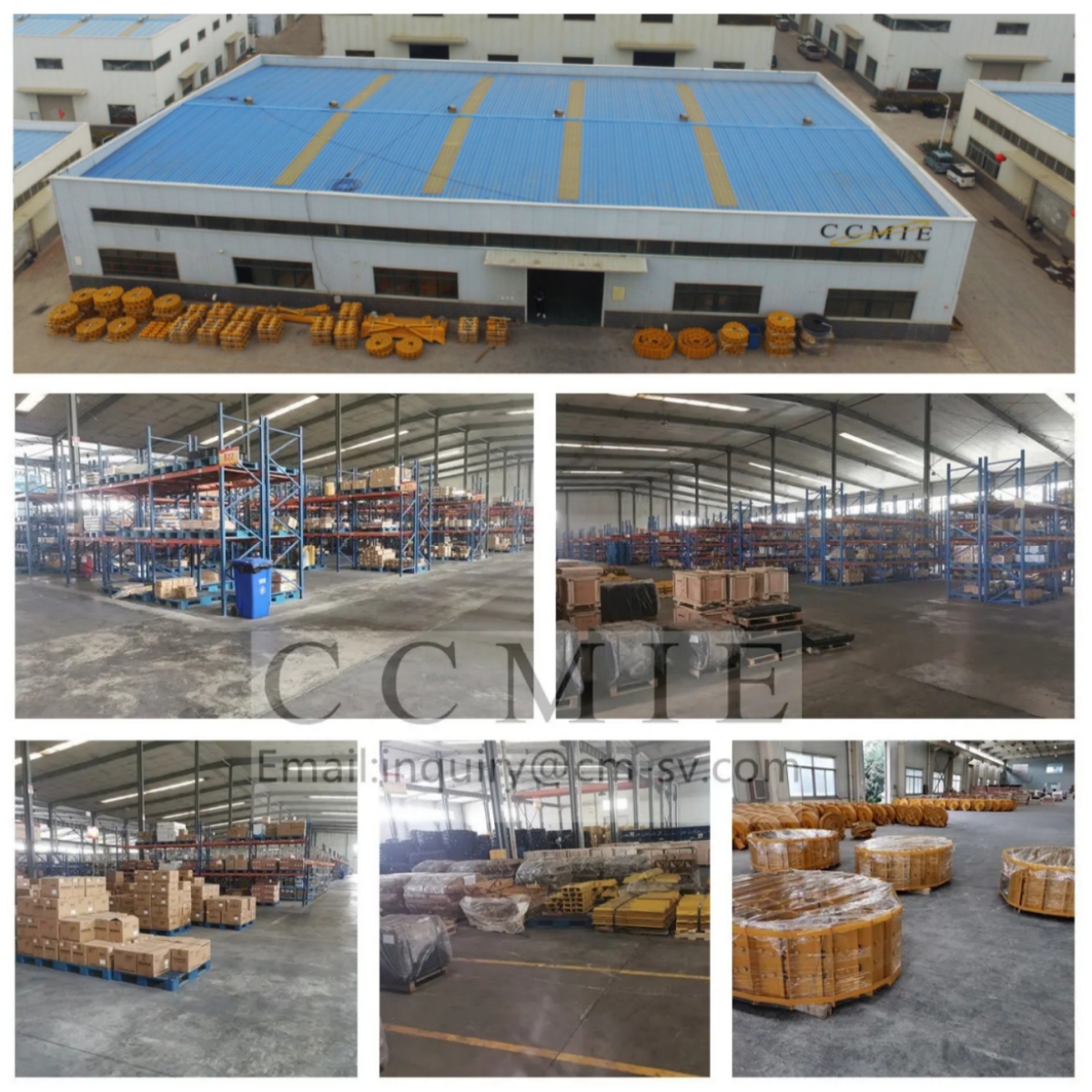
Pack and ship
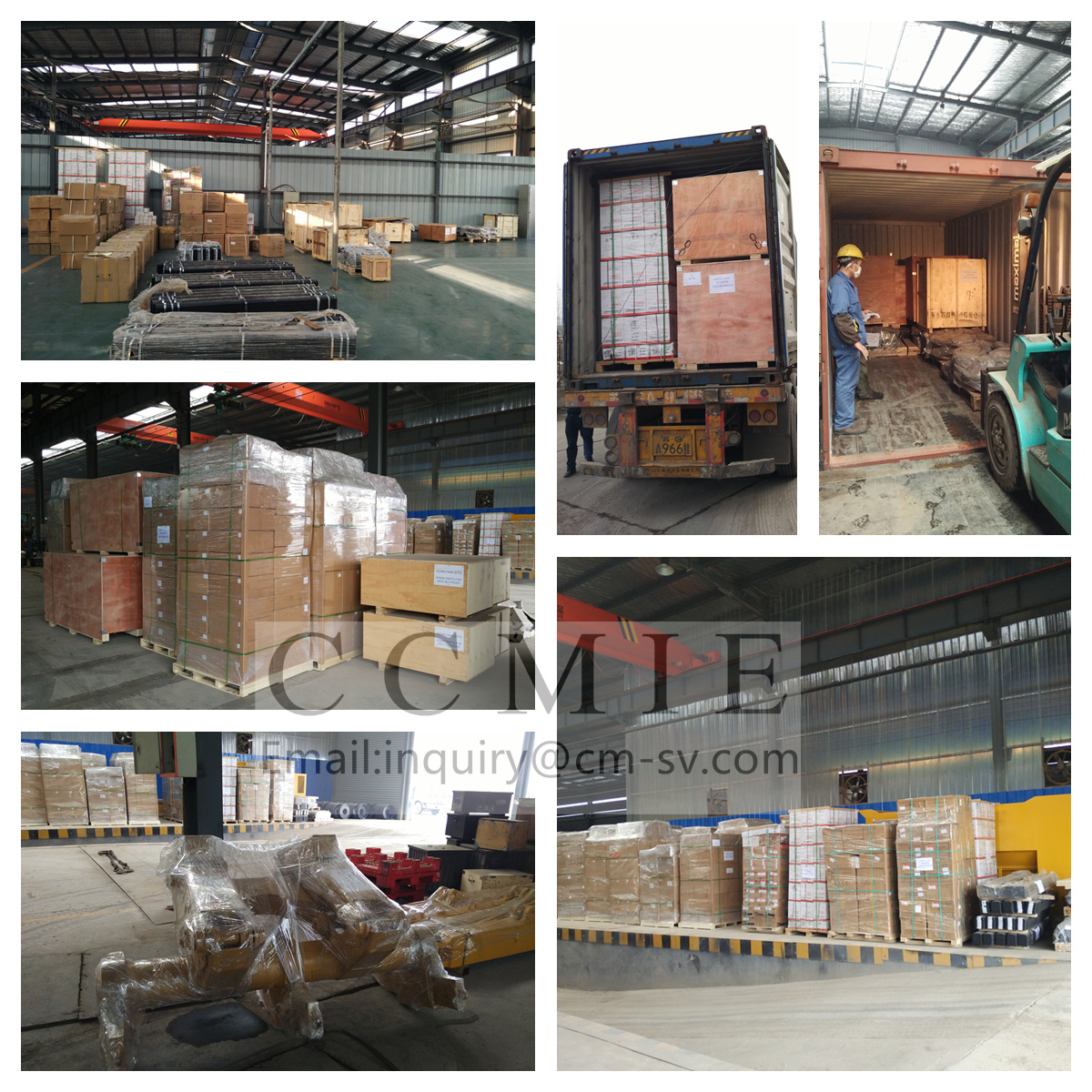
- Aerial Boom Lift
- China Dump Truck
- Cold Recycler
- Cone Crusher Liner
- Container Side Lifter
- Dadi Bulldozer Part
- Forklift Sweeper Attachment
- Hbxg Bulldozer Parts
- Howo Engine Parts
- Hyundai Excavator Hydraulic Pump
- Komatsu Bulldozer Parts
- Komatsu Excavator Gear Shaft
- Komatsu Pc300-7 Excavator Hydraulic Pump
- Liugong Bulldozer Parts
- Sany Concrete Pump Spare Parts
- Sany Excavator Spare Parts
- Shacman Engine Parts
- Shantui Bulldozer Clutch Shaft
- Shantui Bulldozer Connecting Shaft Pin
- Shantui Bulldozer Control Flexible Shaft
- Shantui Bulldozer Flexible Shaft
- Shantui Bulldozer Lifting Cylinder Repair Kit
- Shantui Bulldozer Parts
- Shantui Bulldozer Reel Shaft
- Shantui Bulldozer Reverse Gear Shaft
- Shantui Bulldozer Spare Parts
- Shantui Bulldozer Winch Drive Shaft
- Shantui Dozer Bolt
- Shantui Dozer Front Idler
- Shantui Dozer Tilt Cylinder Repair Kit
- Shantui Sd16 Bevel Gear
- Shantui Sd16 Brake Lining
- Shantui Sd16 Door Assembly
- Shantui Sd16 O-Ring
- Shantui Sd16 Track Roller
- Shantui Sd22 Bearing Sleeve
- Shantui Sd22 Friction Disc
- Shantui Sd32 Track Roller
- Sinotruk Engine Parts
- Tow Truck
- Xcmg Bulldozer Parts
- Xcmg Bulldozer Spare Parts
- Xcmg Hydraulic Lock
- Xcmg Transmission
- Yuchai Engine Parts

